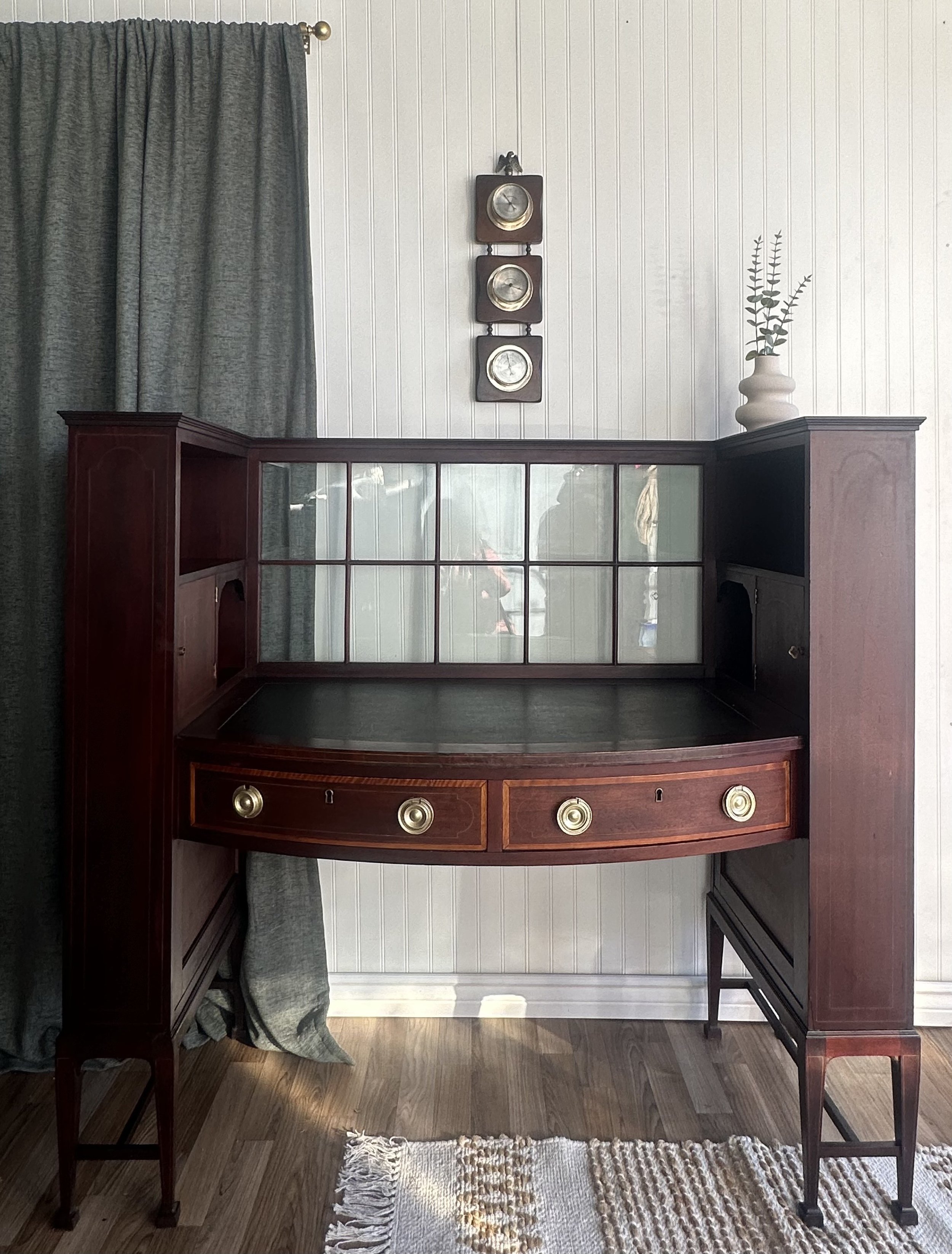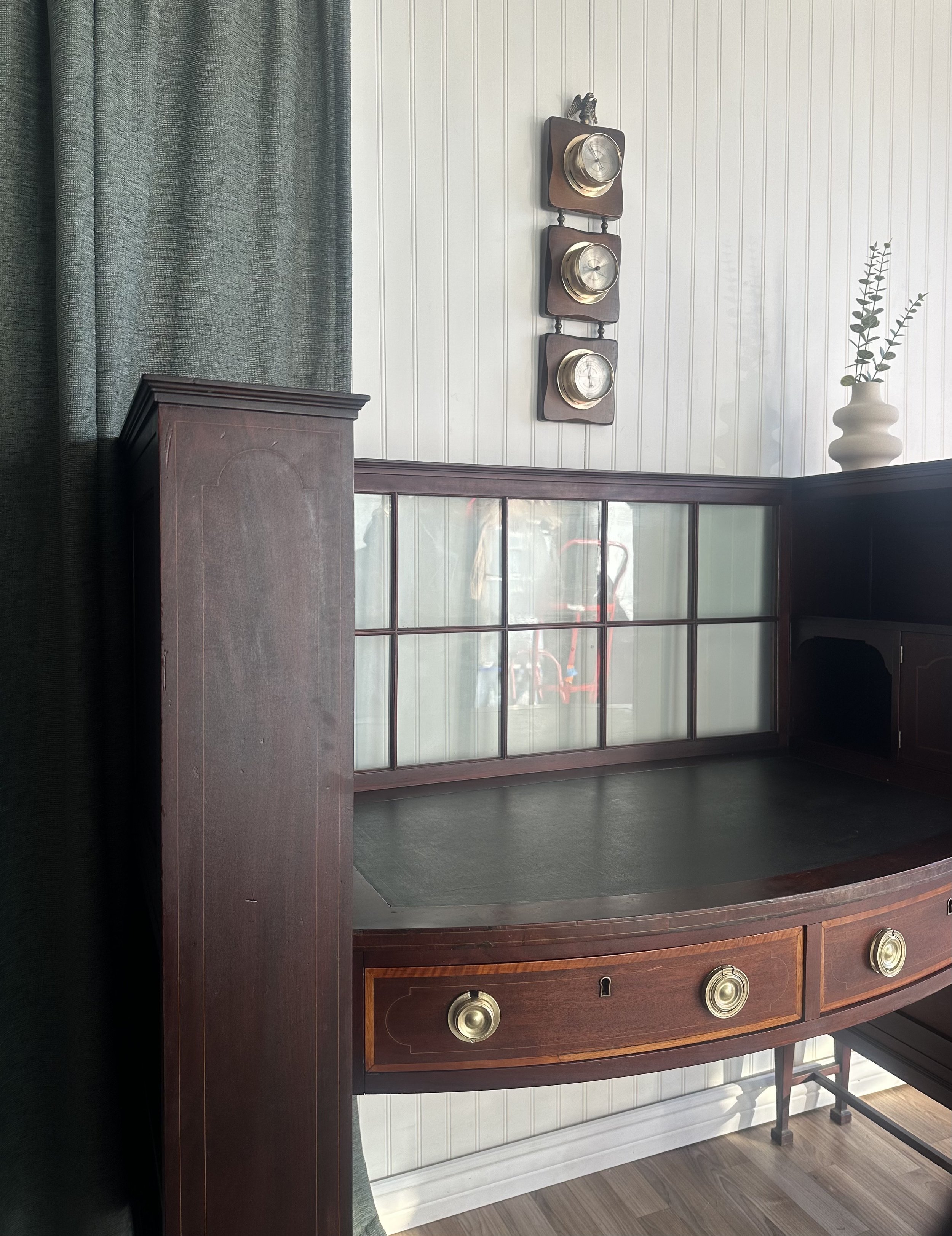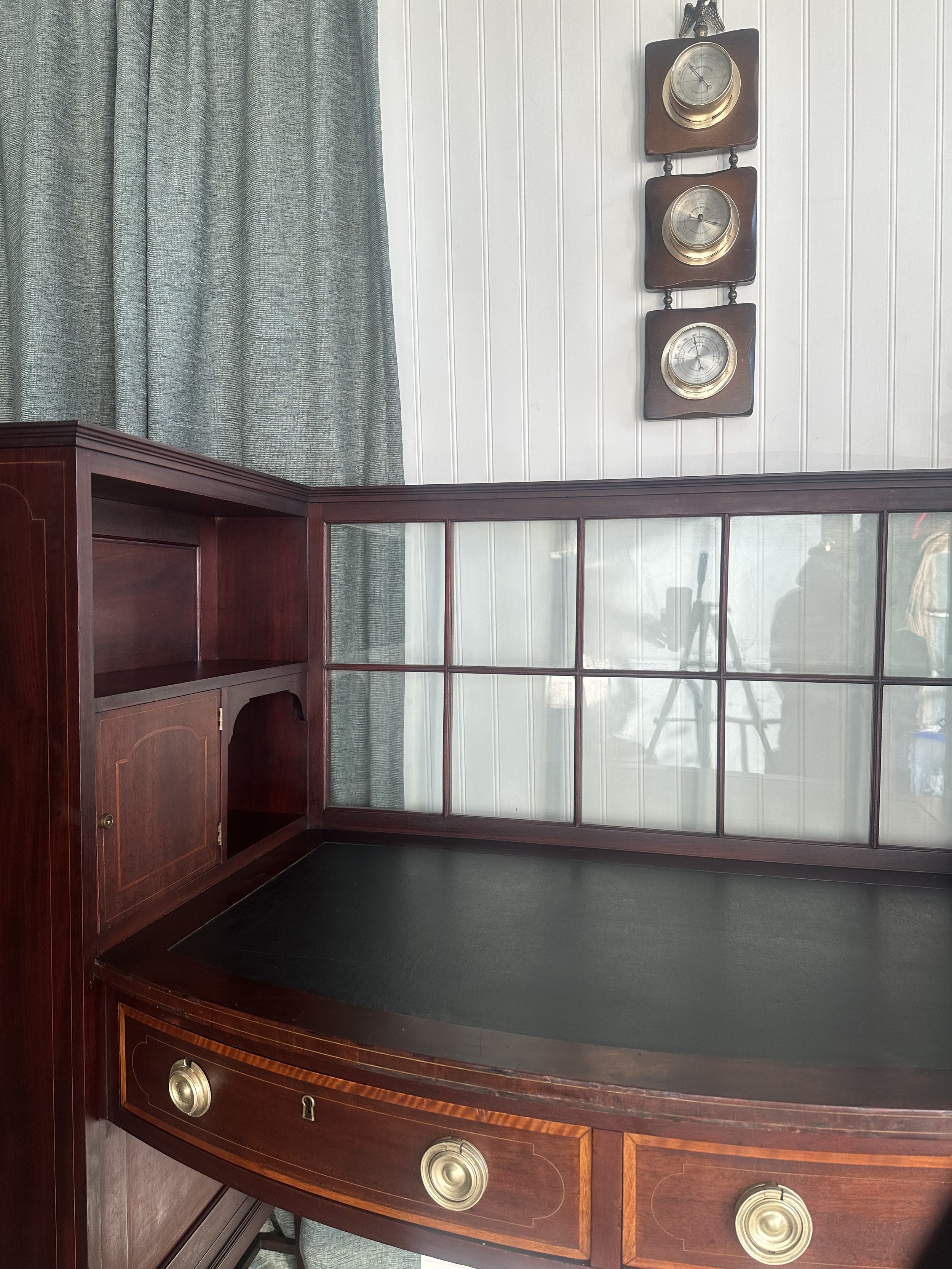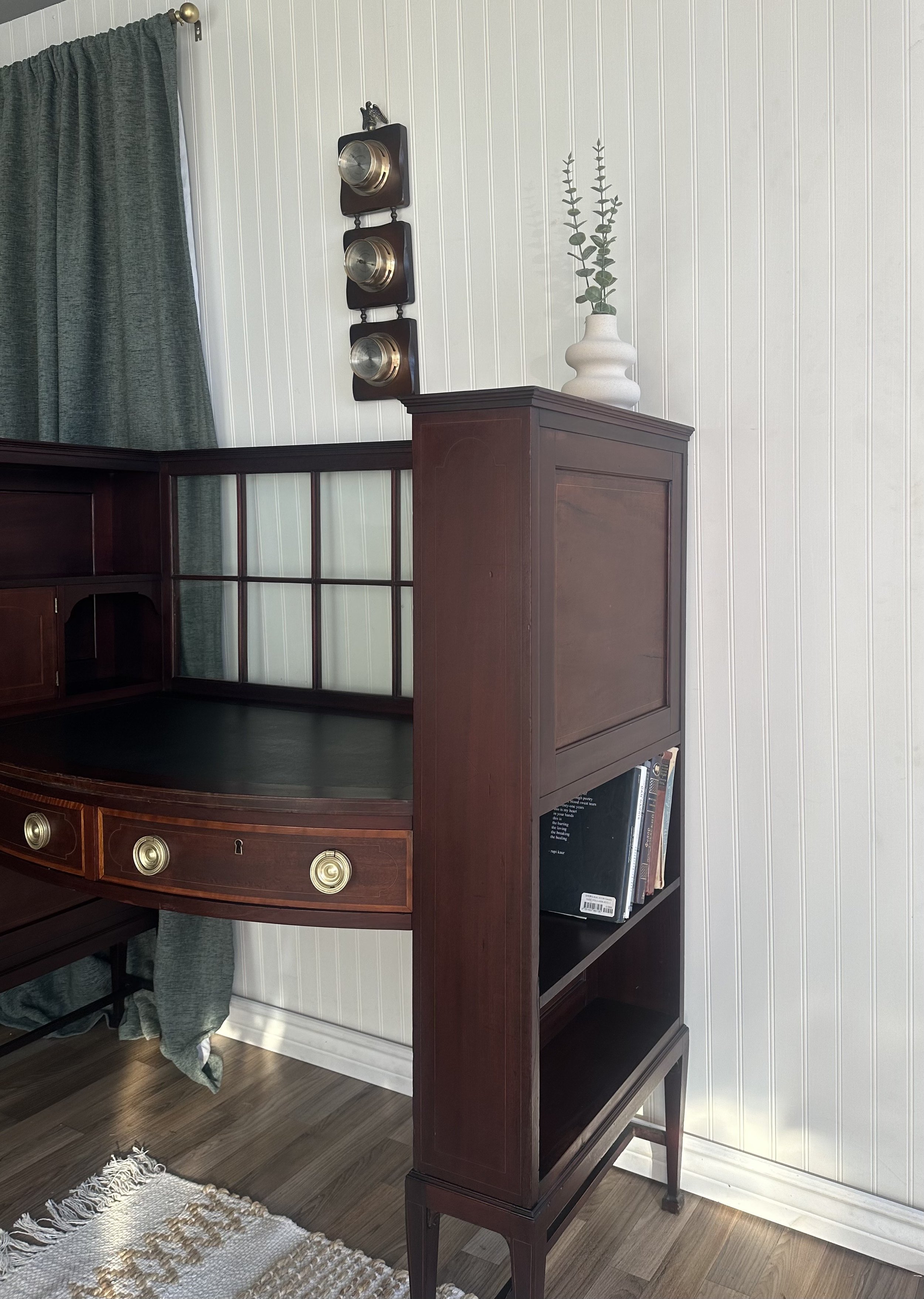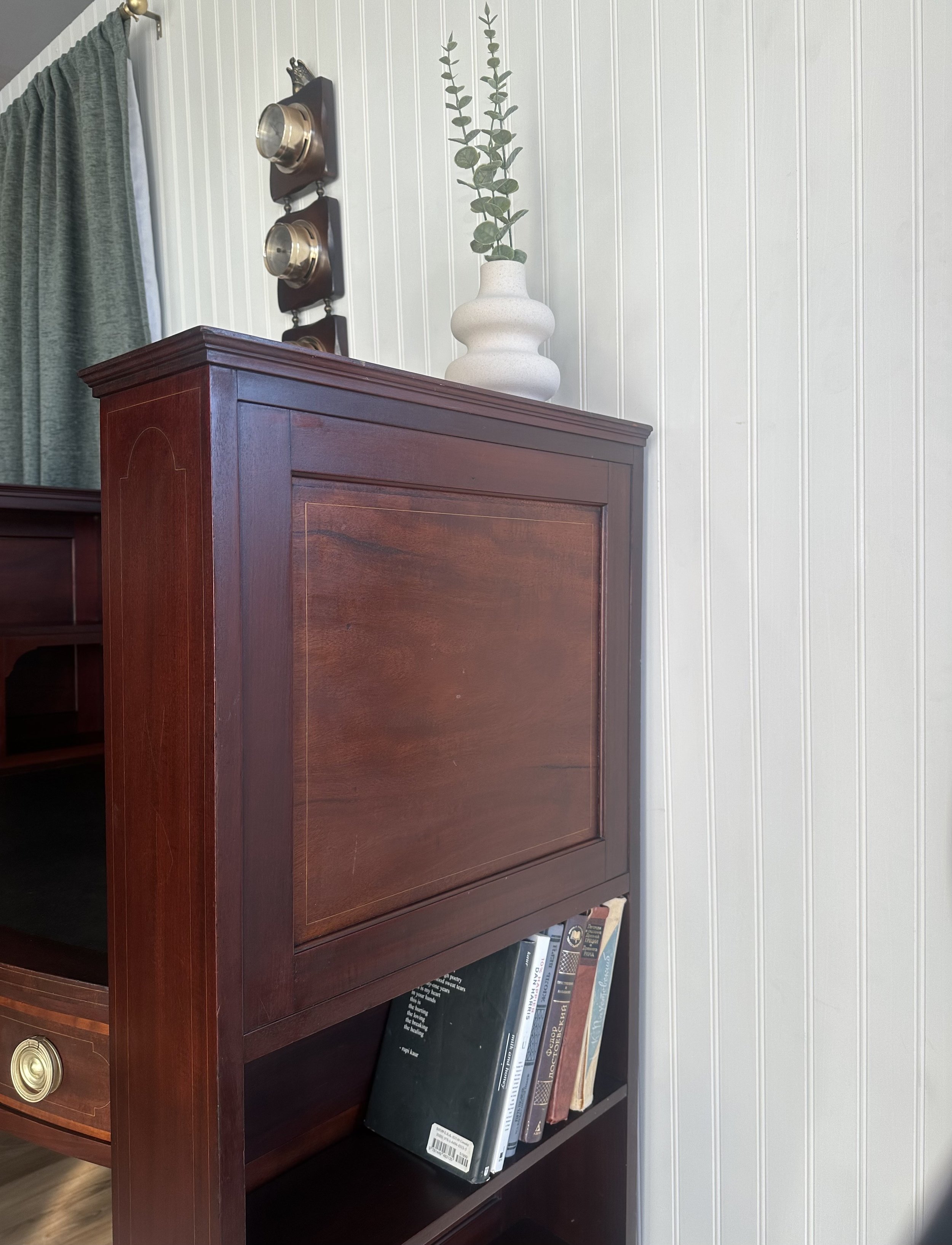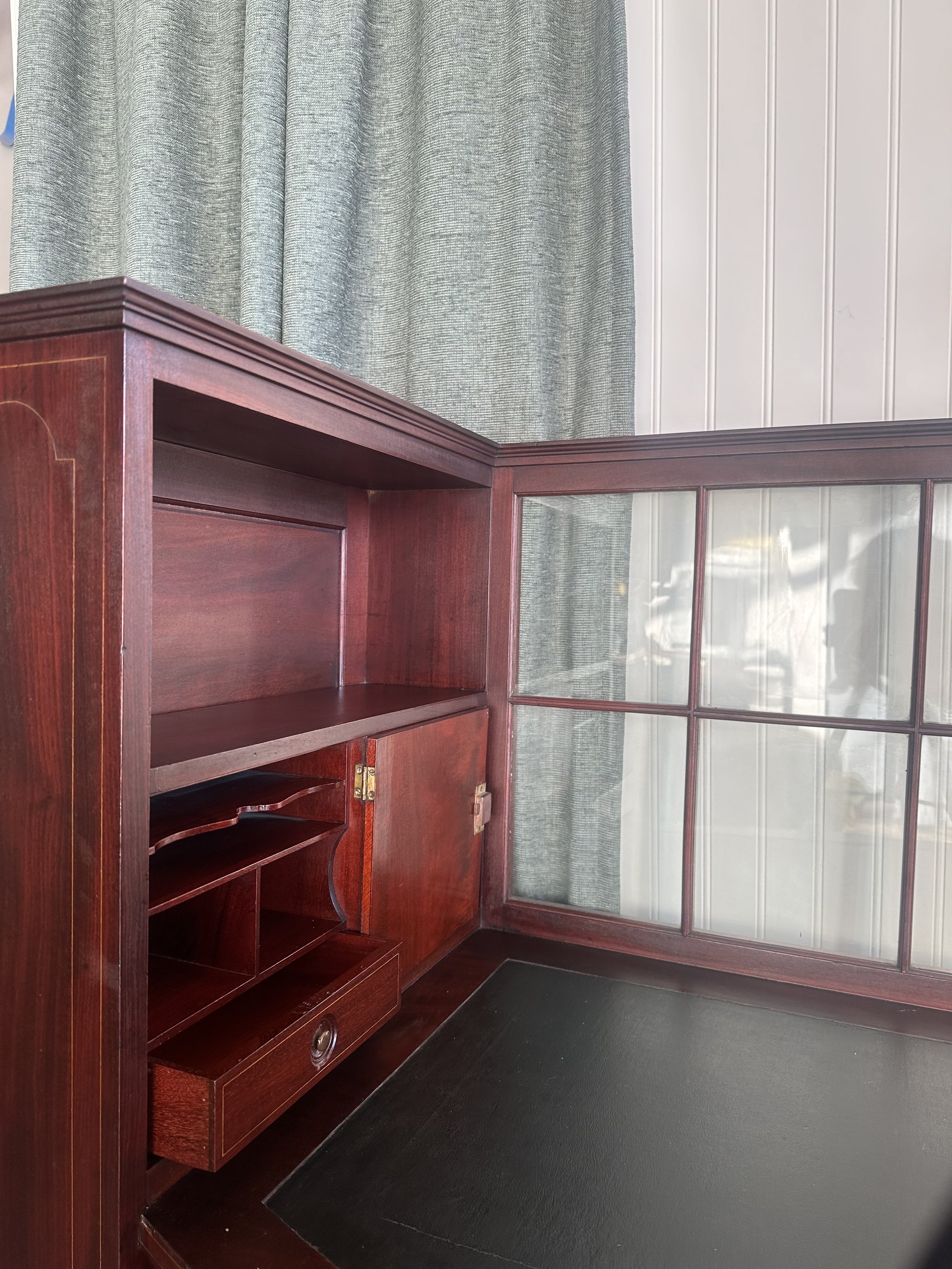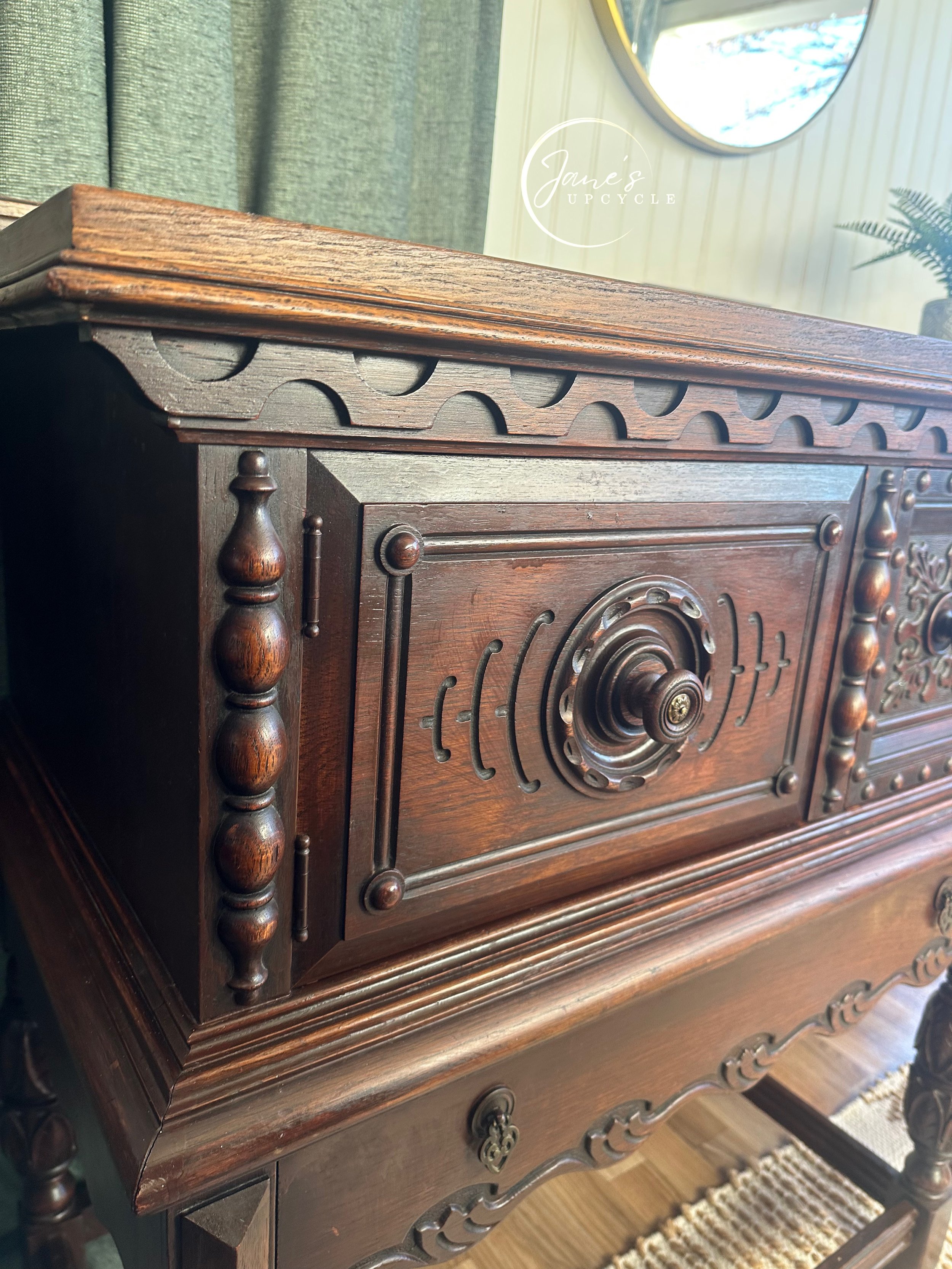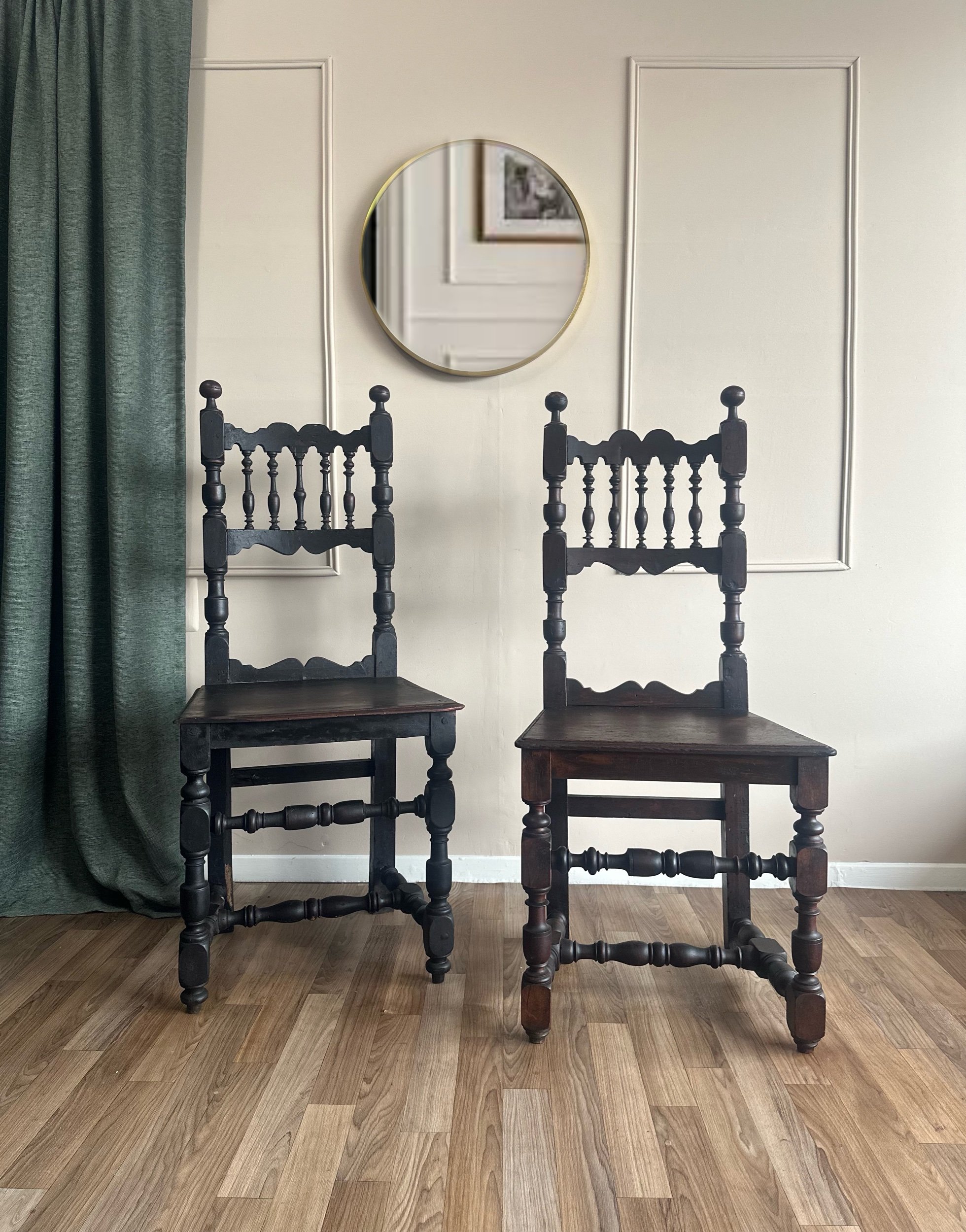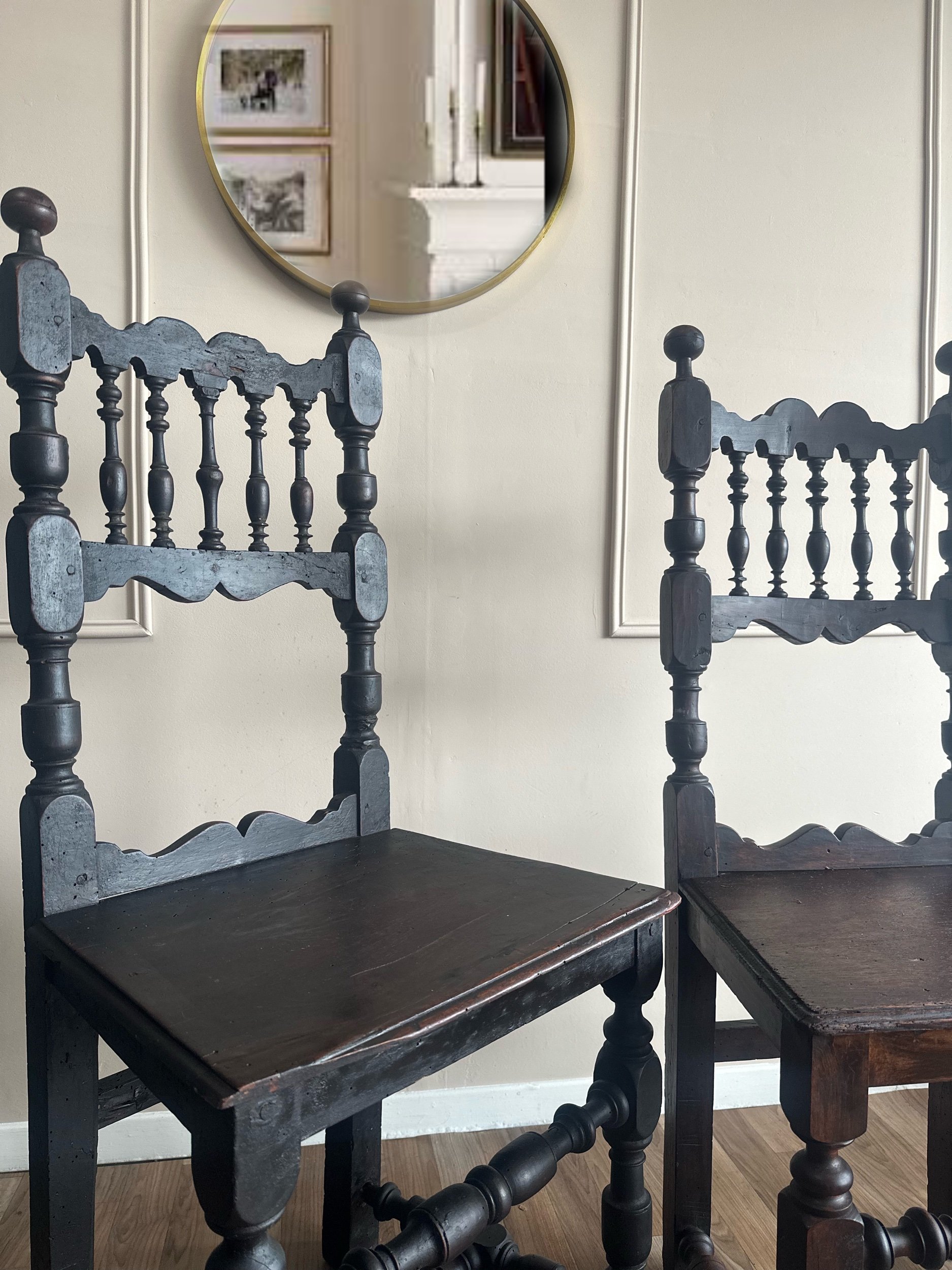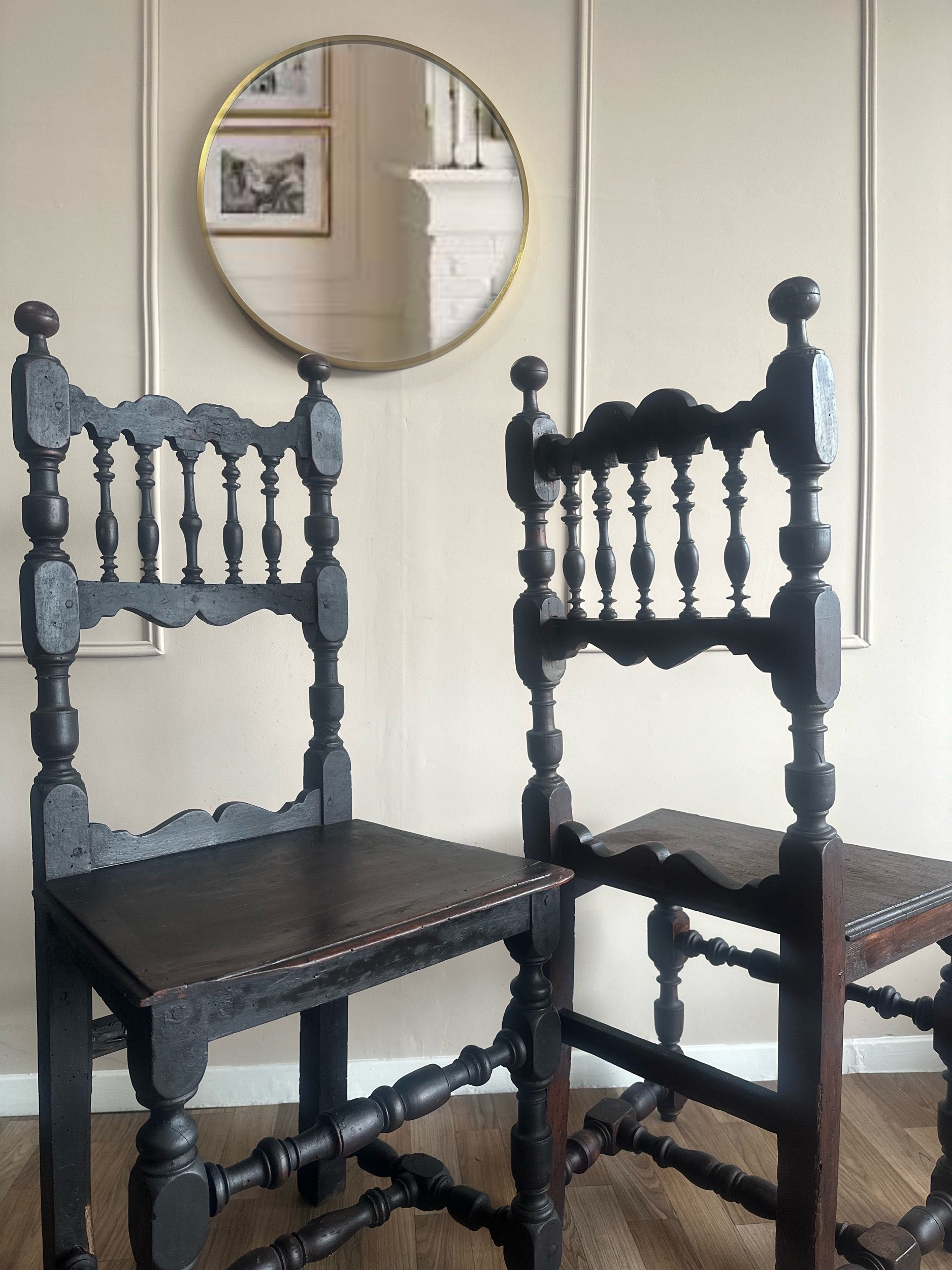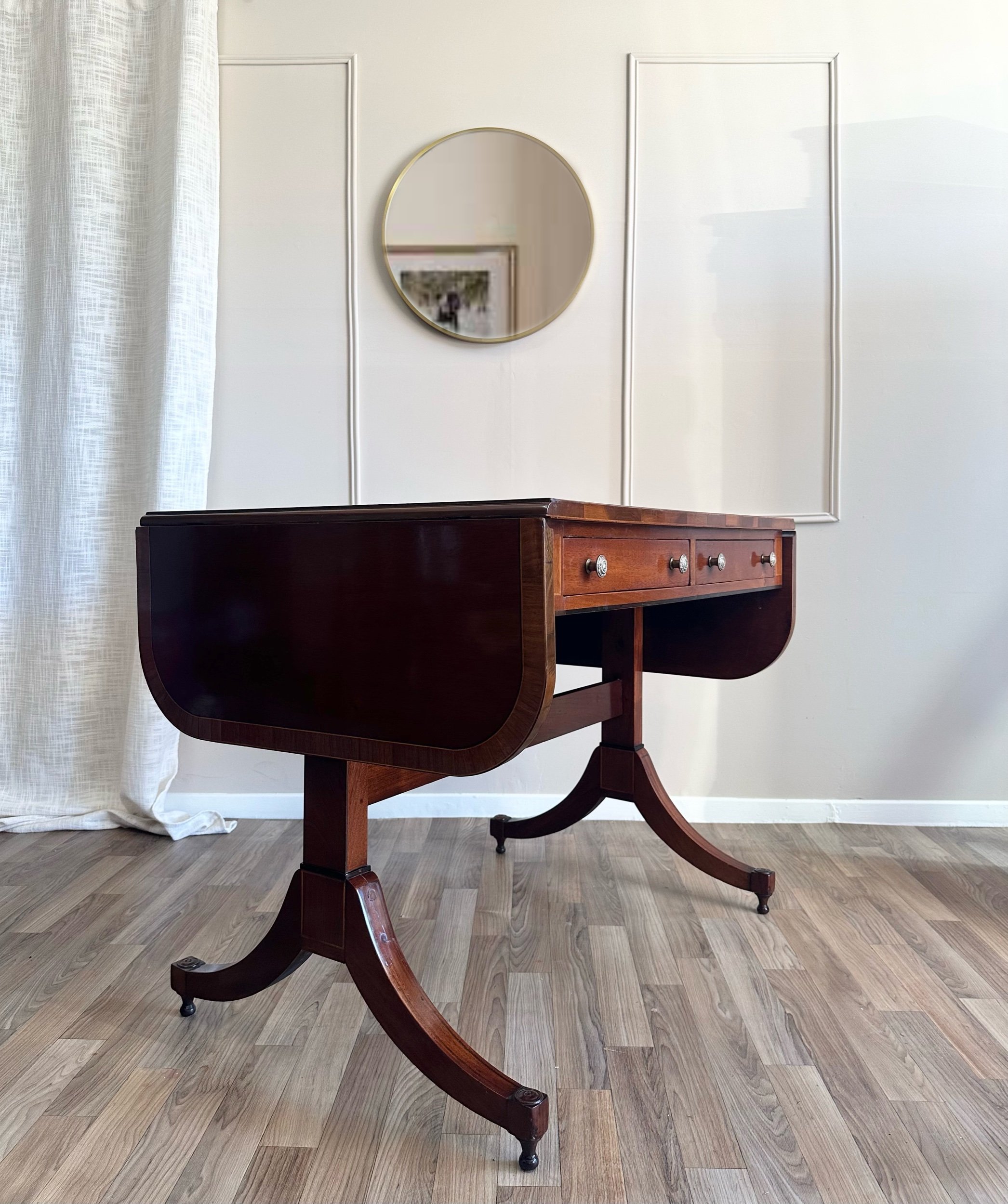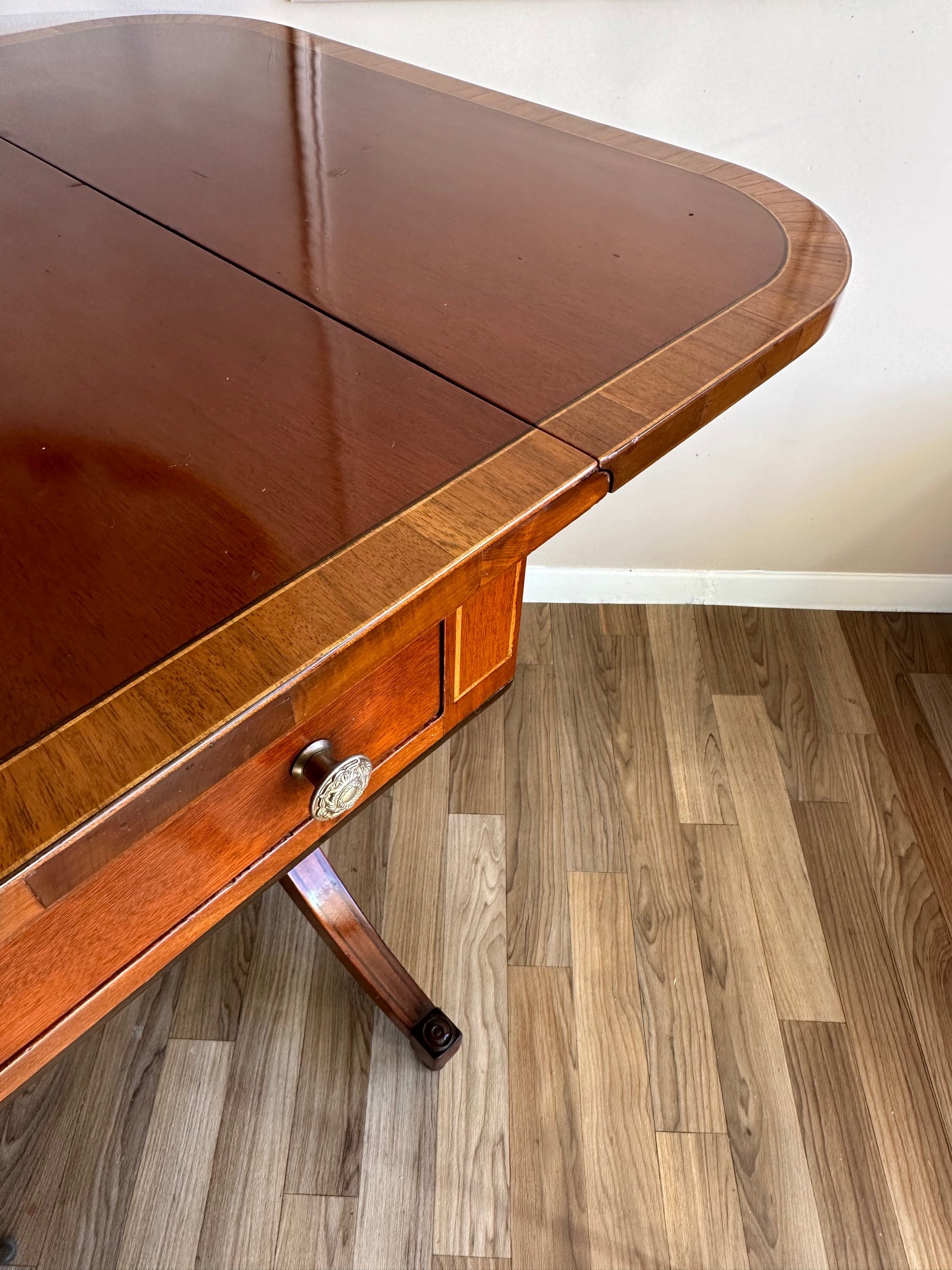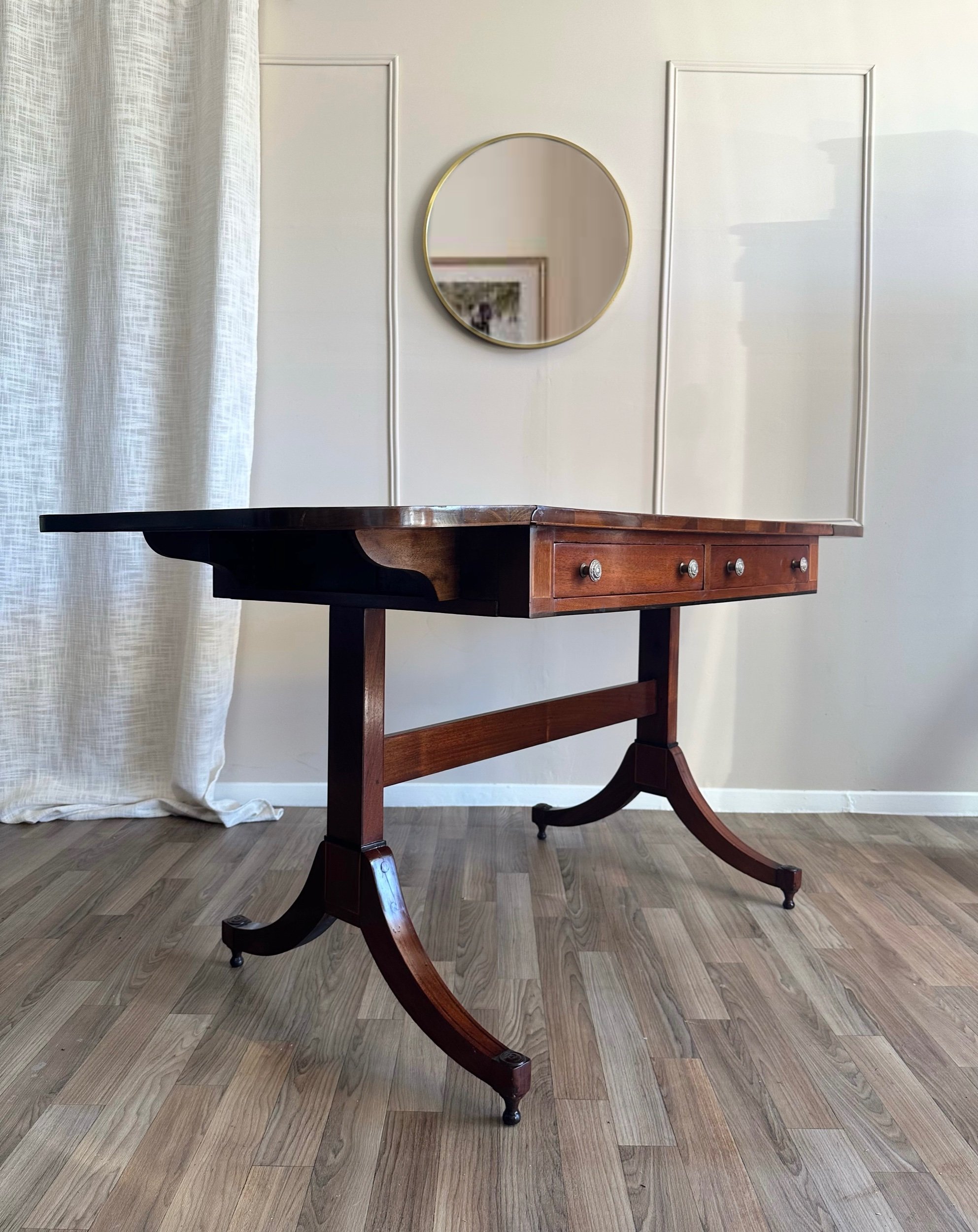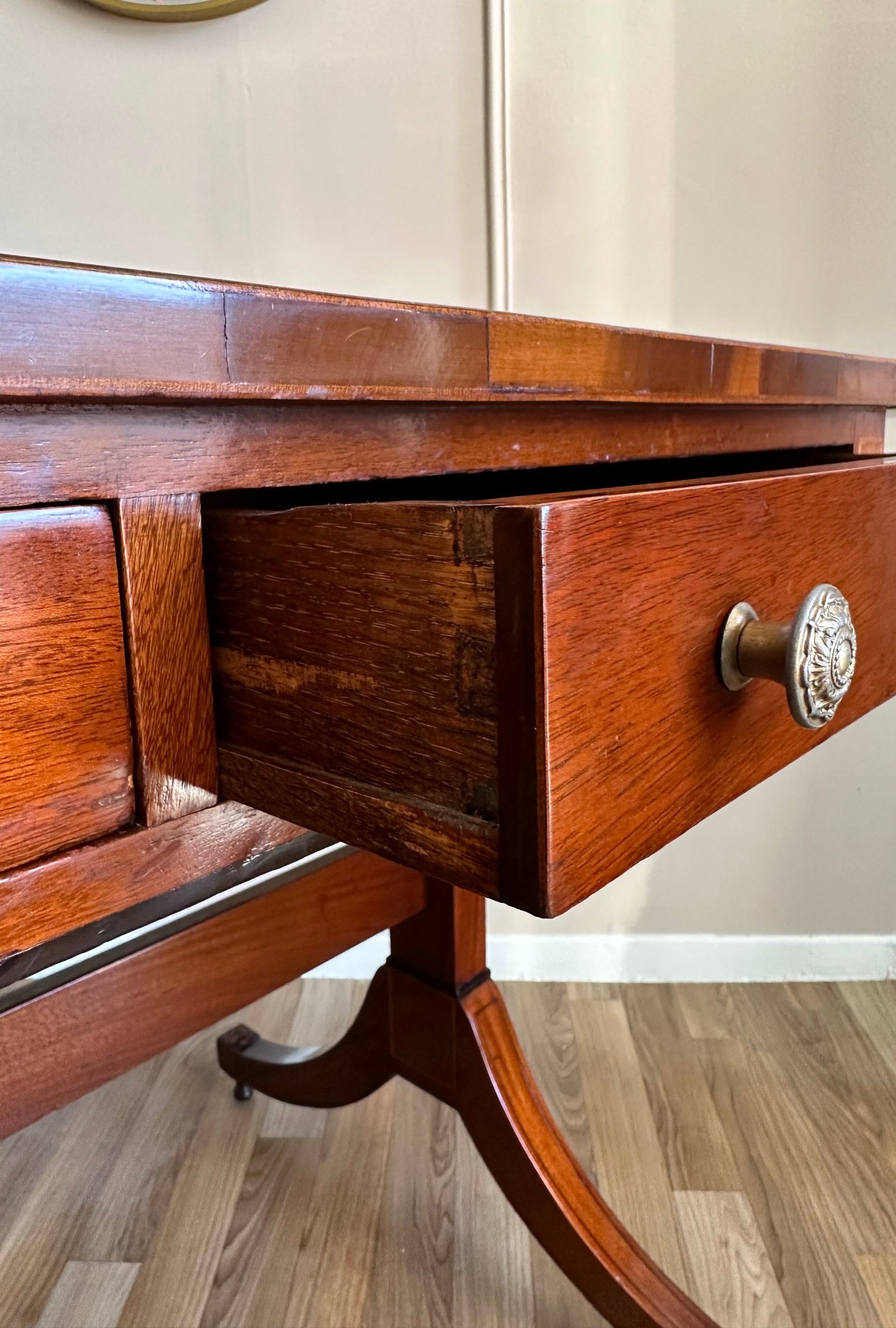
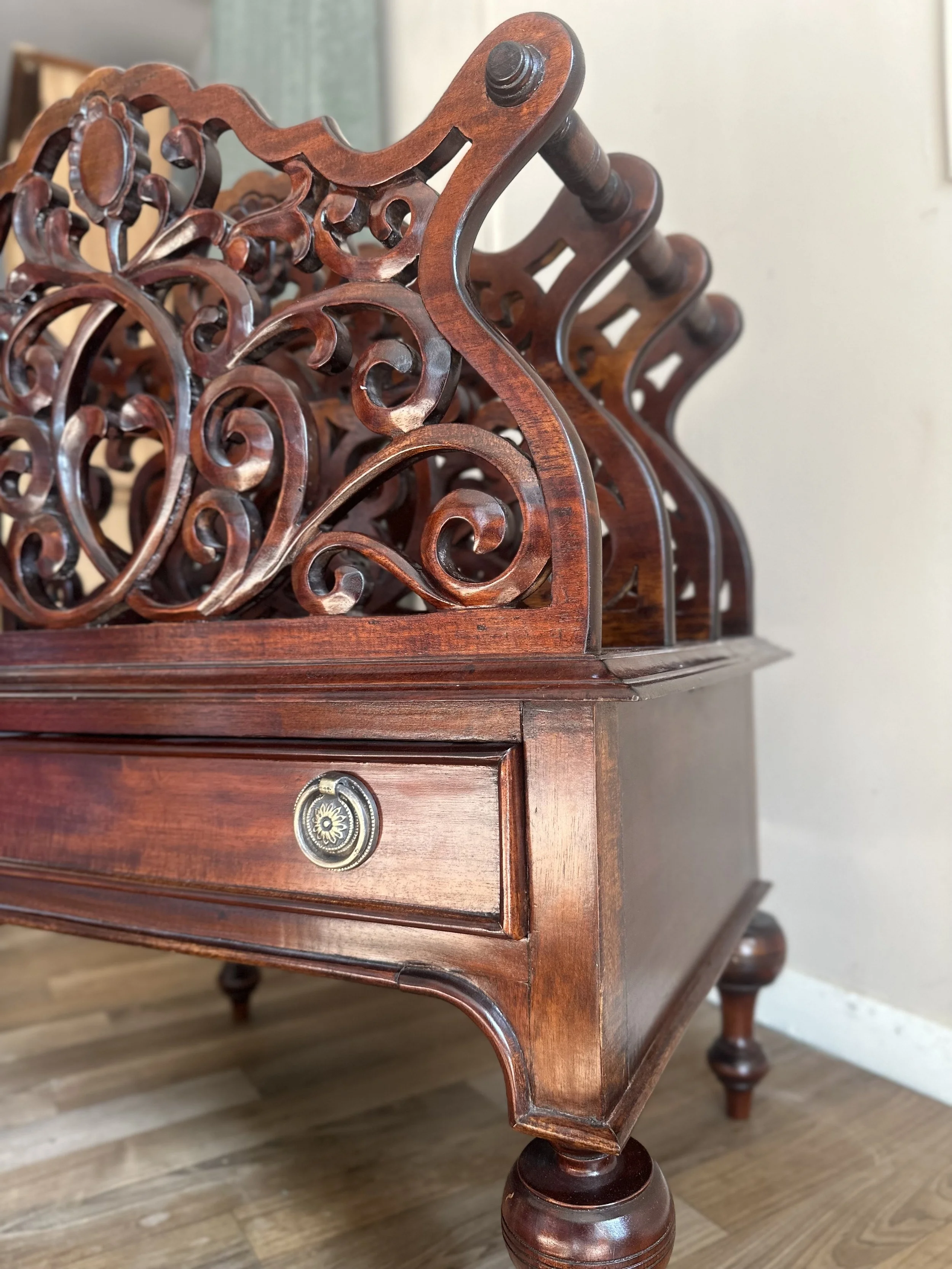



Victorian Carved Mahogany Canterbury With Drawer, C. 1860–1875 (England)
Richly carved mahogany Canterbury in three divisions, the serpentine galleries pierced with scrolling foliage and centered by a small cartouche. Turned carry bars span the ends; a molded top edge sits over a full-width drawer with brass roundel pulls. The case stands on short turned/bulbous legs with ring feet—compact, sturdy, and beautifully proportioned.
Originally designed to organize sheet music, the Canterbury became a parlor staple for magazines and folios; today it’s equally useful for records, art books, or portfolios.
Origin/Period: England, mid-Victorian, c. 1860–1875
Wood: Mahogany, warm period patina
Features: three compartments; pierced scroll galleries; turned carry bars; fitted drawer; turned legs
Condition: very good antique condition with age-appropriate surface wear and small touch-ups; tight and ready to use
A handsome, highly decorative example of the Victorian parlor essential—practical storage with sculptural presence.
Dimensions: W 23" H 27" D 17"
Richly carved mahogany Canterbury in three divisions, the serpentine galleries pierced with scrolling foliage and centered by a small cartouche. Turned carry bars span the ends; a molded top edge sits over a full-width drawer with brass roundel pulls. The case stands on short turned/bulbous legs with ring feet—compact, sturdy, and beautifully proportioned.
Originally designed to organize sheet music, the Canterbury became a parlor staple for magazines and folios; today it’s equally useful for records, art books, or portfolios.
Origin/Period: England, mid-Victorian, c. 1860–1875
Wood: Mahogany, warm period patina
Features: three compartments; pierced scroll galleries; turned carry bars; fitted drawer; turned legs
Condition: very good antique condition with age-appropriate surface wear and small touch-ups; tight and ready to use
A handsome, highly decorative example of the Victorian parlor essential—practical storage with sculptural presence.
Dimensions: W 23" H 27" D 17"
